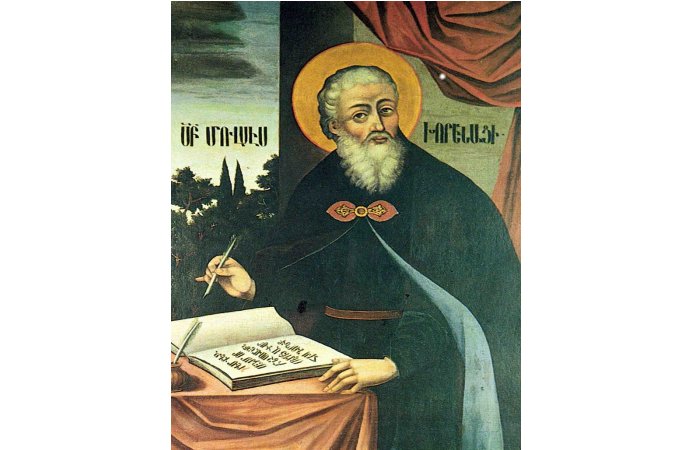Armenia: Old Land Where Myths, Legends And Long History Meet
A. Sutherland - AncientPages.com - The first mention of Armenia in writing is the ca. 4000 BC Sumerian epic of Gilgamesh, where the country was described as a rich country where you must “go by mountain, return by water.”
Armenia is a very old country surrounded by legends and myths and described in ancient heroic epics of the Armenian people.
One of the greatest heroic epics of the Armenian people is the great story of Hayk, the forefather and founder of the first Armenian Kingdom of ‘Ar-Mania’ in 3000 BC.
Movses (Xorenac‘i) Khorenatsi (ca. 410–490 AD) was a prominent Armenian historian from the period of Late Antiquity and the author of the History of Armenia.
He wrote down the epic about Hayk, a legendary patriarch of a tribe of people ruled by the Assyrians, in his ‘History of Armenia’ in the fifth century, from the oral tradition of the ancient troubadours.
The epic story tells about Hayk, a brave man, who was trying to break free from the overlords and led his tribe into the lands of Armenia. This resulted in the battle between Armenians led by Hayk and an Assyrian army of giants led by the god-king Baal.
When Baal saw this sudden and dangerous resistance, he climbed back on the hill from which he had stood and waited for his forces to gather and attack again from all sides. Haik, the mighty and skilled archer, stood opposite Baal; he stretched his bow and shot a three feathered arrow at his heart.
The arrow pierced the iron and passed through Baal's chest, and thus the vain Baal was felled and gave his last breath.
Movses Khorenatsi, an Armenian historian and author of the History of Armenia.Image via Wikipedia
When Baal's army saw this frightful sight, it retreated without looking back.
Haik named this battlefield Haiyotsdzor (the valley of Hai), and the spot where Bel fell - Gerezman (the Grave).
The battle had taken place on the banks of Lake Van. Haik had Bel's body dyed with many colors and hung from a high place so his wives and children could see it.
The Assyrians were defeated and the people of Hayk were liberated. These grateful people named their land “Hayastan” in honor of their victorious king.
In another series of myths, Hayk’s son, Ara, extended the country’s lands to all of the Armenian Plateau (Eastern Turkey and present-day Armenia).
Ancestral Armenians have always possessed a rich oral history with their Near Eastern neighbors, including a very old form of the Flood Epic, shared by Assyrians, Babylonians, and Sumerians.
Some say the Ararat valley is also the location of the first city after the Biblical Flood, and that Armenians are direct descendants of Noah. Their land could be the spot where Noah and his son descended when the ark rested on the famous mountains of Ararat.
Written by – A. Sutherland AncientPages.com Staff Writer
Copyright © AncientPages.com All rights reserved. This material may not be published, broadcast, rewritten or redistributed in whole or part without the express written permission of AncientPages.com
Expand for referencesReferences:
S.Z. Najmuddin, Armenia : a Resumé : with Notes on Seth's Armenians in India
More From Ancient Pages
-
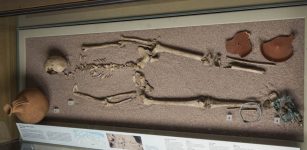 London Was Always A Multicultural City, DNA Research Confirms
Archaeology | Nov 26, 2015
London Was Always A Multicultural City, DNA Research Confirms
Archaeology | Nov 26, 2015 -
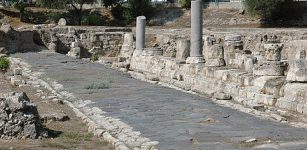 Biblical City Of Tarsus: Excavations Reveal Its Secrets From Paul the Apostle’s Times
Archaeology | Jan 4, 2016
Biblical City Of Tarsus: Excavations Reveal Its Secrets From Paul the Apostle’s Times
Archaeology | Jan 4, 2016 -
 Magnificent Trumpington Cross And Highly Unusual Anglo-Saxon ‘Bed Burial’ In Cambridge Offer Unique Insight Into English Christianity
Archaeology | Feb 22, 2018
Magnificent Trumpington Cross And Highly Unusual Anglo-Saxon ‘Bed Burial’ In Cambridge Offer Unique Insight Into English Christianity
Archaeology | Feb 22, 2018 -
 Mystery Of The 1,700-Year-Old ‘Salt’ Mummy With Long White Hair
Featured Stories | Sep 14, 2016
Mystery Of The 1,700-Year-Old ‘Salt’ Mummy With Long White Hair
Featured Stories | Sep 14, 2016 -
 LIDAR Discovery Of Ancient City With 10,000 Mounds On The Pacific Island Of Tongatapu
Archaeology | Apr 16, 2024
LIDAR Discovery Of Ancient City With 10,000 Mounds On The Pacific Island Of Tongatapu
Archaeology | Apr 16, 2024 -
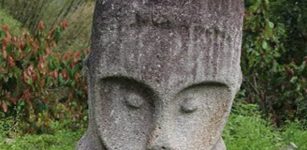 Mysterious Prehistoric Statues In Bada Valley, Indonesia Surrounded With Countless Legends
Civilizations | Jan 9, 2019
Mysterious Prehistoric Statues In Bada Valley, Indonesia Surrounded With Countless Legends
Civilizations | Jan 9, 2019 -
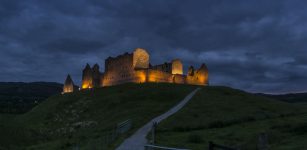 Legend Of The Ruthven Barracks Where Alexander Stewart Played Chess With The Devil
Featured Stories | Jan 27, 2022
Legend Of The Ruthven Barracks Where Alexander Stewart Played Chess With The Devil
Featured Stories | Jan 27, 2022 -
 Earliest Baltic Amber In Western Europe Found On The Iberian Peninsula 5,000 Years Ago
Archaeology | Oct 21, 2023
Earliest Baltic Amber In Western Europe Found On The Iberian Peninsula 5,000 Years Ago
Archaeology | Oct 21, 2023 -
 Unexpected Discovery – Medieval Monks Recorded Mysterious Volcanic Eruptions
News | Apr 6, 2023
Unexpected Discovery – Medieval Monks Recorded Mysterious Volcanic Eruptions
News | Apr 6, 2023 -
 The Battle Of Anghiari – Lost Painting Of Leonardo Da Vinci – One Of Art History’s Greatest Mysteries
Artifacts | Jan 24, 2018
The Battle Of Anghiari – Lost Painting Of Leonardo Da Vinci – One Of Art History’s Greatest Mysteries
Artifacts | Jan 24, 2018 -
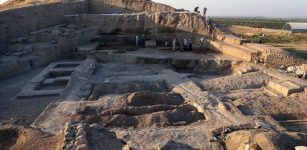 Excavations At Oylum Höyük In Southeast Anatolia Near Syrian Border – Resumed
Archaeology | Jul 26, 2020
Excavations At Oylum Höyük In Southeast Anatolia Near Syrian Border – Resumed
Archaeology | Jul 26, 2020 -
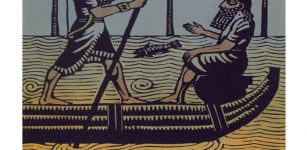 Missing Lines From Epic Of Gilgamesh Shed New Light On Humbaba
Artifacts | Oct 9, 2015
Missing Lines From Epic Of Gilgamesh Shed New Light On Humbaba
Artifacts | Oct 9, 2015 -
 Extraordinary Bronze Age Jewelry Hoard Discovered In A Carrot Field In Switzerland
Archaeology | Oct 18, 2023
Extraordinary Bronze Age Jewelry Hoard Discovered In A Carrot Field In Switzerland
Archaeology | Oct 18, 2023 -
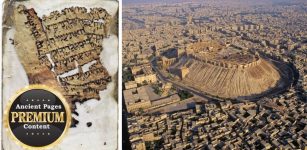 Unsolved Mystery Of The Aleppo Codex And Its Missing Pages: One Of The World’s Most Precious Ancient Books
Artifacts | Feb 27, 2017
Unsolved Mystery Of The Aleppo Codex And Its Missing Pages: One Of The World’s Most Precious Ancient Books
Artifacts | Feb 27, 2017 -
 Khufu Boat And Unique Boat-Building Technique Of Ancient Egyptians
Artifacts | Jun 20, 2017
Khufu Boat And Unique Boat-Building Technique Of Ancient Egyptians
Artifacts | Jun 20, 2017 -
 Mystery Of An Edinburgh Crypt – Secrets Of Warriors Of Dark Ages In Scotland – Revealed
Archaeology | Oct 3, 2015
Mystery Of An Edinburgh Crypt – Secrets Of Warriors Of Dark Ages In Scotland – Revealed
Archaeology | Oct 3, 2015 -
 Teutonic Knights – Facts And History About The Christian Military Order
Featured Stories | Feb 21, 2019
Teutonic Knights – Facts And History About The Christian Military Order
Featured Stories | Feb 21, 2019 -
 Jigai – Suicide Ritual For Wives Of Samurai – Feminine Counterpart Of Seppuku
Ancient History Facts | Feb 24, 2018
Jigai – Suicide Ritual For Wives Of Samurai – Feminine Counterpart Of Seppuku
Ancient History Facts | Feb 24, 2018 -
 Ancient Board Game Mancala Can Unlock Cutting-Edge Physics Discoveries
Artifacts | Sep 30, 2023
Ancient Board Game Mancala Can Unlock Cutting-Edge Physics Discoveries
Artifacts | Sep 30, 2023 -
 Metal Artifacts In Southeast Asia Archaeological Theory – Challenged
Archaeology | Jul 31, 2021
Metal Artifacts In Southeast Asia Archaeological Theory – Challenged
Archaeology | Jul 31, 2021



